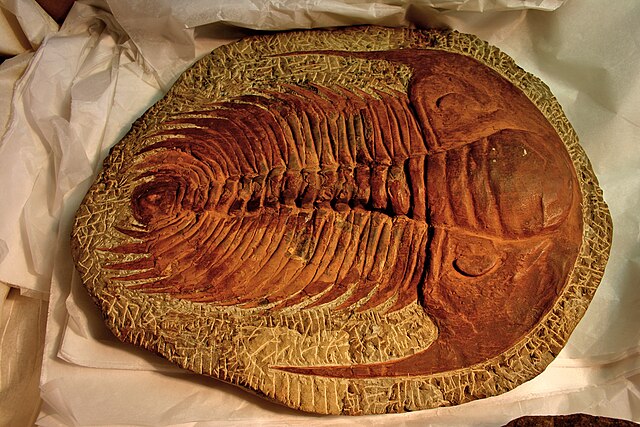Eodiscina is trilobite suborder. The Eodiscina first developed near the end of the Lower Cambrian period and became extinct at the end of the Middle Cambrian. Species are tiny to small, and have a thorax of two or three segments. Eodiscina includes six families classified under one superfamily, Eodiscoidea.
Eodiscina
Cladogram of the relations between the families of the Eodiscina, according to Jell, 1975
Pagetia taijiangensis, 3mm, from Kaili, Guizhou, China
Trilobites are extinct marine arthropods that form the class Trilobita. Trilobites form one of the earliest known groups of arthropods. The first appearance of trilobites in the fossil record defines the base of the Atdabanian stage of the Early Cambrian period and they flourished throughout the lower Paleozoic before slipping into a long decline, when, during the Devonian, all trilobite orders except the Proetida died out. The last trilobites disappeared in the mass extinction at the end of the Permian about 251.9 million years ago. Trilobites were among the most successful of all early animals, existing in oceans for almost 270 million years, with over 22,000 species having been described.
Redlichiida, such as this Paradoxides, may represent the ancestral trilobites.
Fossil Prochuangia from the Cambrian period of Darnjal Formation, Tabas, Iran
Meroperix, from the Silurian of Wisconsin
Walliserops trifurcatus, from Jebel Oufatene mountain near Fezzou, Morocco







